From a symbol of division to one of unity: How a bike trail helped re-write the legacy of the Berlin Wall
'If rails can become trails, why not borders?' asks Joe Baur as he explores the trail which grew from the scar of an infamous, deadly path

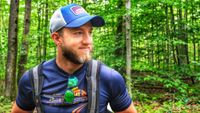
It’s quiet. All I can hear is the sound of wind whizzing by my ears and the ticking of my rear hub as I coast along a paved path into the countryside. The lush greenery and forests flitting into my peripheral vision from either side of the mostly asphalted path, interlaced with occasional crushed limestone, trick me into thinking I’m hours away from the city.
But the fact is, I never left. In reality, I’m cycling along the scars of one of the most infamous, deadly paths created in the history of humankind. This is the Berliner Mauerweg or Berlin Wall Trail - a 100-mile path that traces the remains of what was once a heavily fortified military barrier that turned West Berlin into a political island for 28 years. Now, what remains of the purpose-built wall designed to prevent people escaping from East Berlin to the West during the Cold War is a veritable hidden gem right under the nose of anyone visiting the German capital.
Even Germans themselves are often unaware that the trail extends well beyond the historical markers turned tourist sites of the city centre, to create a complete 100-mile loop that anyone can cover on two wheels. This is despite the fact that hundreds if not thousands regularly commute along the Mauerweg as it cuts across the Spree River, around Brandenburg Gate, and into the heart of the city where landmarks like Checkpoint Charlie stand as stark reminders of how far Berlin has come.
Riding the Mauerweg
I first rode along the Mauerweg about a decade ago with Sascha Möllering, a Berlin on Bike tour guide. Möllering was 15 years old, living in the leafy West Berlin suburb of Lichterfelde, when an East German bureaucrat by the name of Günter Schabowski mistakenly announced that travel restrictions to the west would be lifted immediately. It was November 9, 1989, not quite a year after Erich Honecker, General Secretary of the Socialist Unity Party of Germany, confidently declared that “the Wall will still be standing in 50 and even in 100 years, if the reasons for it are not removed.”
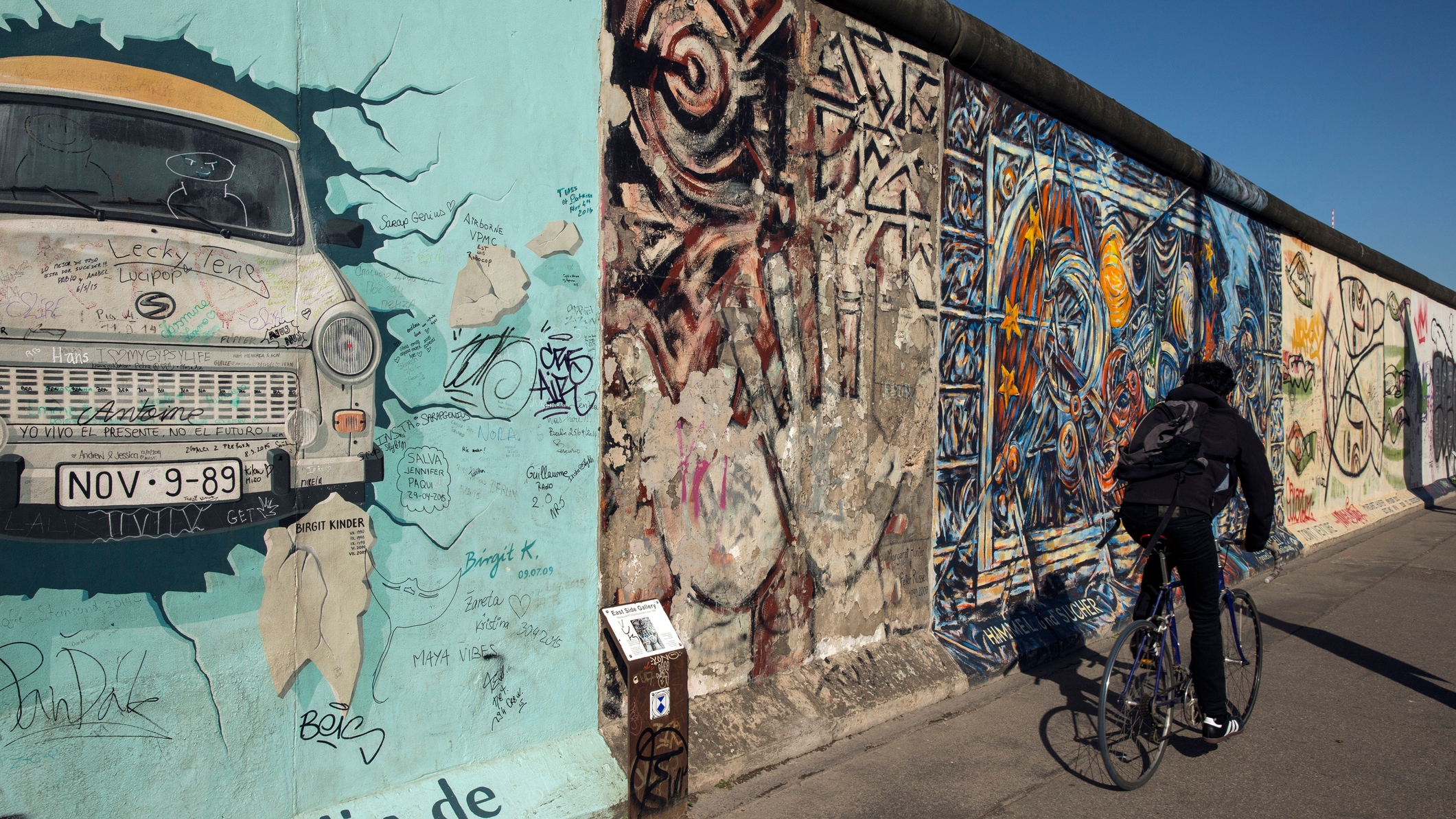
Just 1.3km of the wall remains, running along Muhlenstrasse and parallel to the Spree river
Möllering has since been a regular along the Mauerweg, using it to get around town and to guide small groups of tourists interested in learning more about the history of the infamous divider.
“I’d say I have done at least 300 wall tours over the years, each of them at least 10 - 12 kilometres and a lot of them longer,” he says. “Plus I have done the whole thing at least five times.”
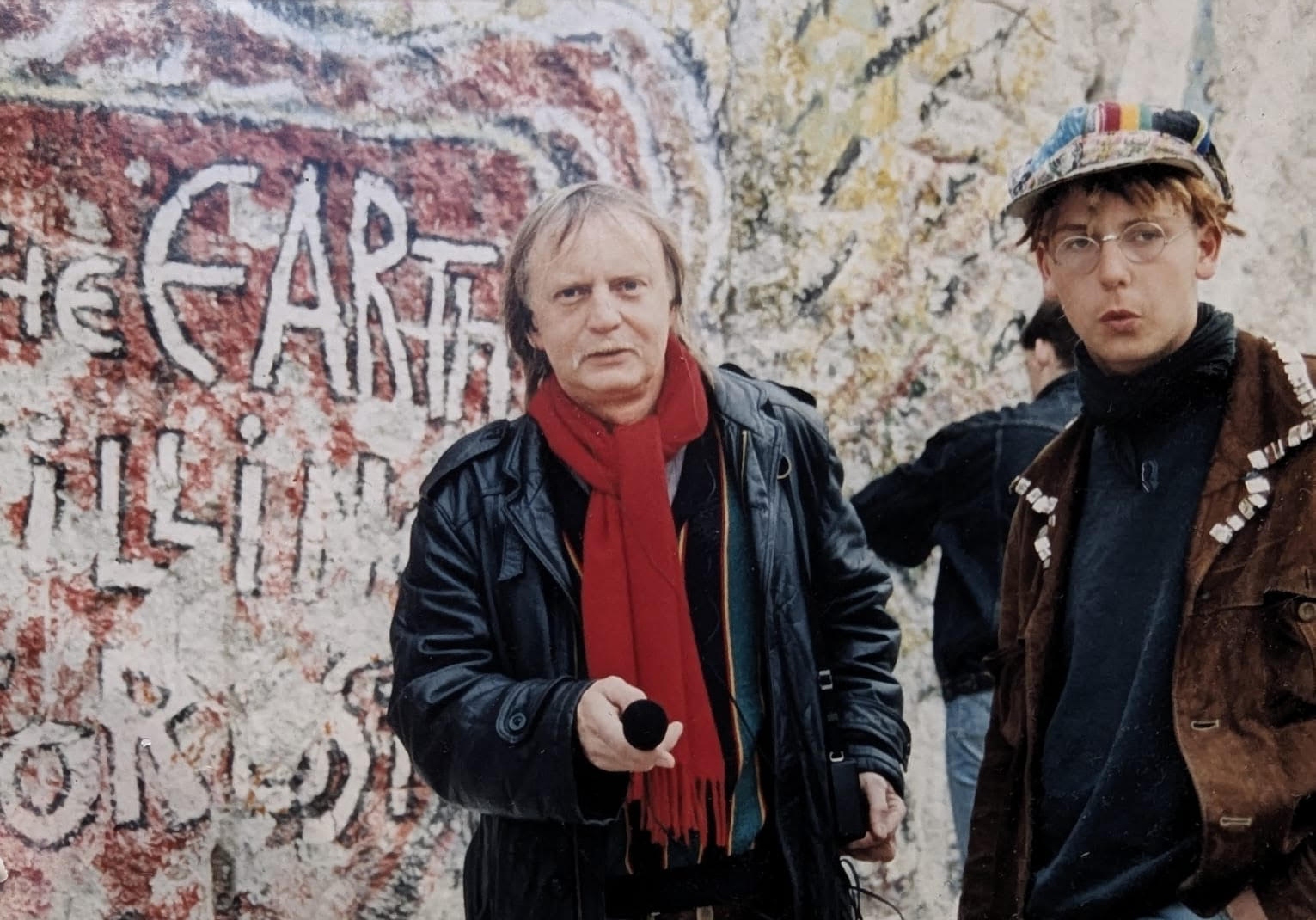
Möllering, aged 15, shortly after the wall came down
I remember how impressed I was with how seamlessly the winding path cut through the urban maze, blended into a bike trail, and transported us to the outskirts of the city where animals, small lakes, streams, and forests are common sights. That remained true during a recent ride along the Mauerweg, retracing my tracks from nearly a decade earlier.
The latest race content, interviews, features, reviews and expert buying guides, direct to your inbox!
I hopped on near Schönefeld in the southeastern corner of the city where you can find a rare patch of dirt trail that turns into the aptly named Grenzstraße (Border Street) before alternating between crushed limestone gravel and smooth asphalt. My goal was to wrap around the city, following the path as it turned into a kind of bike highway adjacent to the Autobahn, until I met with Jonny Whitlam at a memorial for Chris Gueffroy, the last person shot trying to escape the Berlin Wall.
Whitlam, a British tour guide specializing in German and Berlin history, explains that Gueffory was convinced to attempt his escape after rumors started circulating that East Germany had dropped its shoot-to-kill orders. Plus, the Swedish Prime Minister was in town. Surely they wouldn’t shoot an unarmed civilian during such a high-profile visit. So alongside a friend, Gueffroy made a run for it along the very same path on which I’ve just cycled.
Gueffroy’s friend managed to get across the wall. Sadly, Gueffroy was shot from both sides by several border guards. One of the bullets hit him in the heart and he died. On what would have been Gueffroy’s 35th birthday in 2003, a memorial was erected in his honor.
“Today, this always hits me, he would only be in his mid-50s,” says Whitlam. “Not yet even 60 years old.”
Turning the Wall Into a Trail
Interestingly, plans to transform the Berlin Wall into a trail were already taking root months before the wall started coming down. During the summer of 1989, Michael Cramer, a Green Party representative in Berlin’s Abgeordnetenhaus (House of Representatives), rode 100 miles along an improvised path established by the Western Allies, tracing the wall’s boundary.
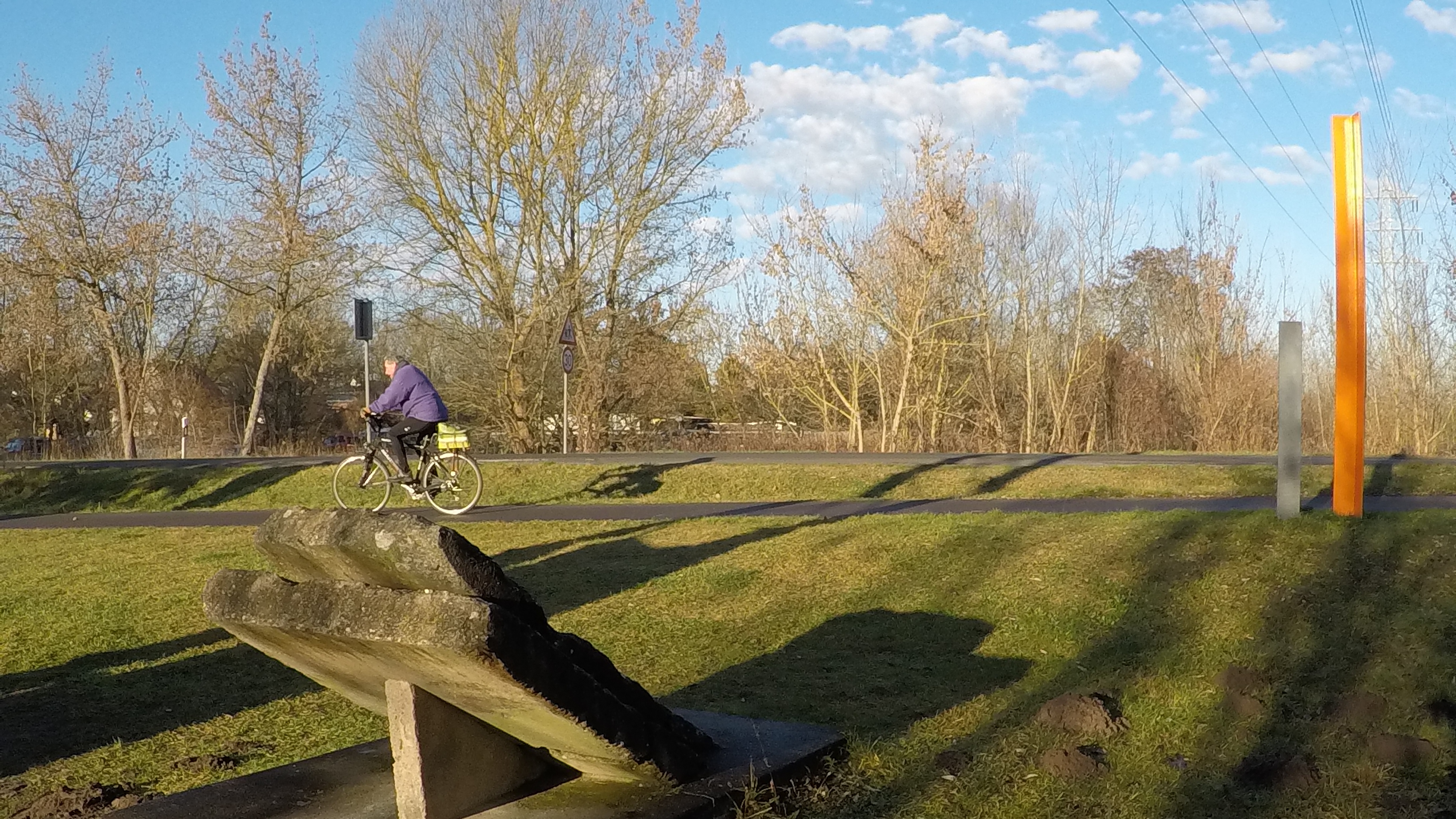
The trail is used by riders of all kinds
“I never could imagine that some months later, the wall would be open,” the 75-year-old retired politician tells me on a sunny afternoon with his bike leaning against a remnant of the wall-turned-memorial at Bernauer Straße.
The following year, he took another ride along the Berlin Wall. This time he followed the former “death strip”—a 100- to 300-foot-wide no-man's-land sandwiched between the wall’s eastern and western barriers. This strip was once a grim gauntlet for East Germans attempting to escape, where they encountered barbed wire, guard towers with armed soldiers, alarm systems, trip wires, and even a brutal device known as “Stalin’s Lawn,” a patch of 12-inch metal spikes clustered along the wall’s edge.
A decade later, Cramer successfully rallied unanimous support in Berlin’s Abgeordnetenhaus to establish the Mauerweg. The project included clear signage and was specifically designed to be accessible and friendly for cyclists. This earned him the nickname, “Father of the Berlin Wall Trail.”
A Berlin Wall Century
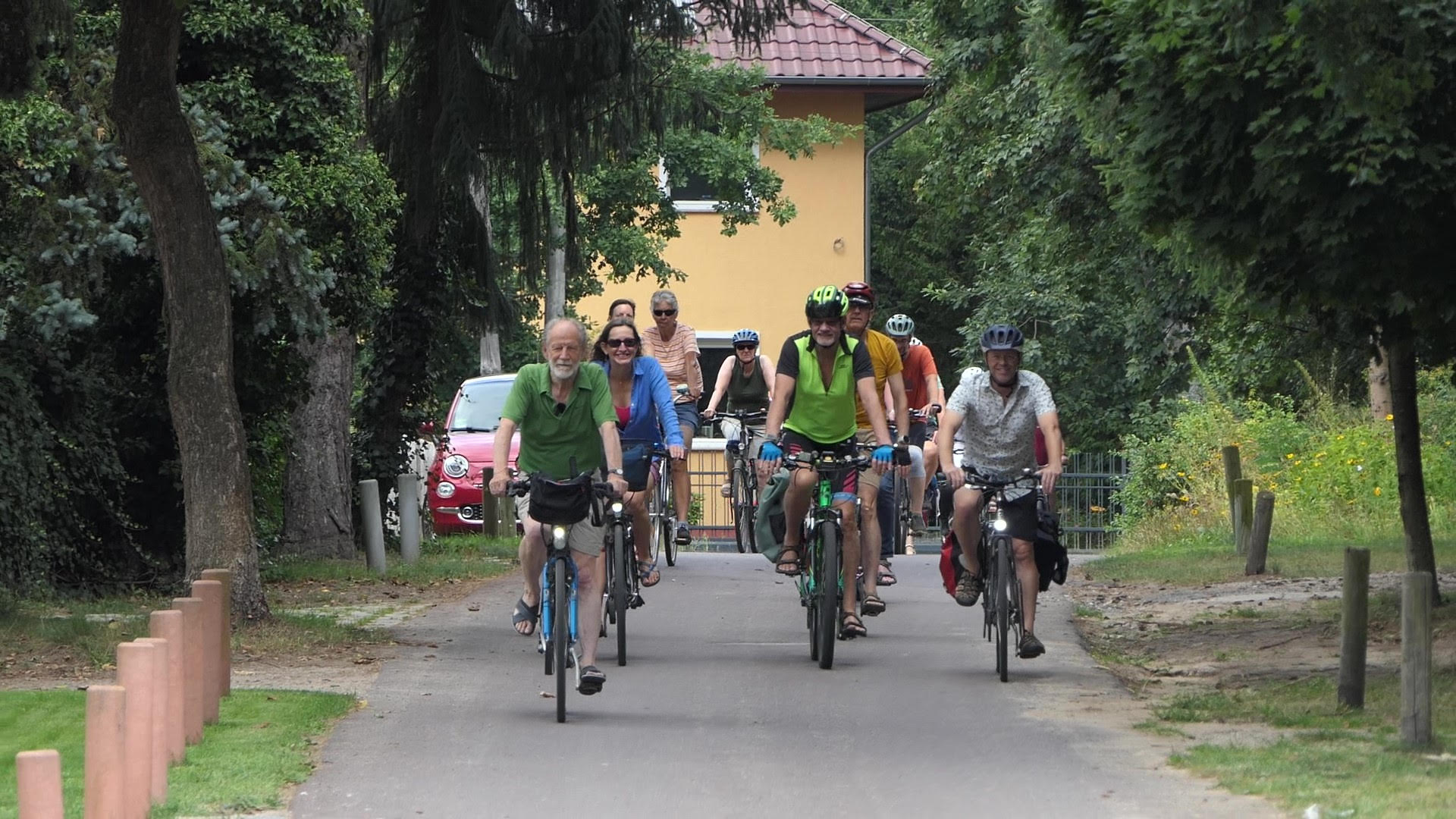
Cramer led a group of 250 riders along the path at its opening
The Mauerweg officially opened in 2001 after Cramer led a group of 250 cyclists along the path and has since become the crown jewel of Berlin’s cycling infrastructure. There are those like Asaf Leshem, an Israeli-born, dual German citizen who has been working as a professional tour guide in Berlin since 2010 and regularly cycles centuries around the Mauerweg.
Leshem first learned about the Mauerweg through his Cold War tours and while training for his second marathon. He proceeded to run the Mauerweg over several days and followed that up with an 80-kilometer cycle to further his education about the Mauerweg.
“The thing that stuck from the first run and ride was the incredible combination of beautiful nature with fascinating history,” he says. That fascination turned into a desire to cycle the entire trail in a single day in 2018.
The crown jewel of Berlin’s cycling infrastructure
“It was my first 100-mile ride,” he says. “So this time, it was also about the sense of achievement.”
Leshem now cycles the Mauerweg multiple times a year. He estimates that his ride last week, his second time this year, was at least his 10th century around the trail.
“If there's one constant [about cycling the Mauerweg], it’s that every time is a completely different adventure!”
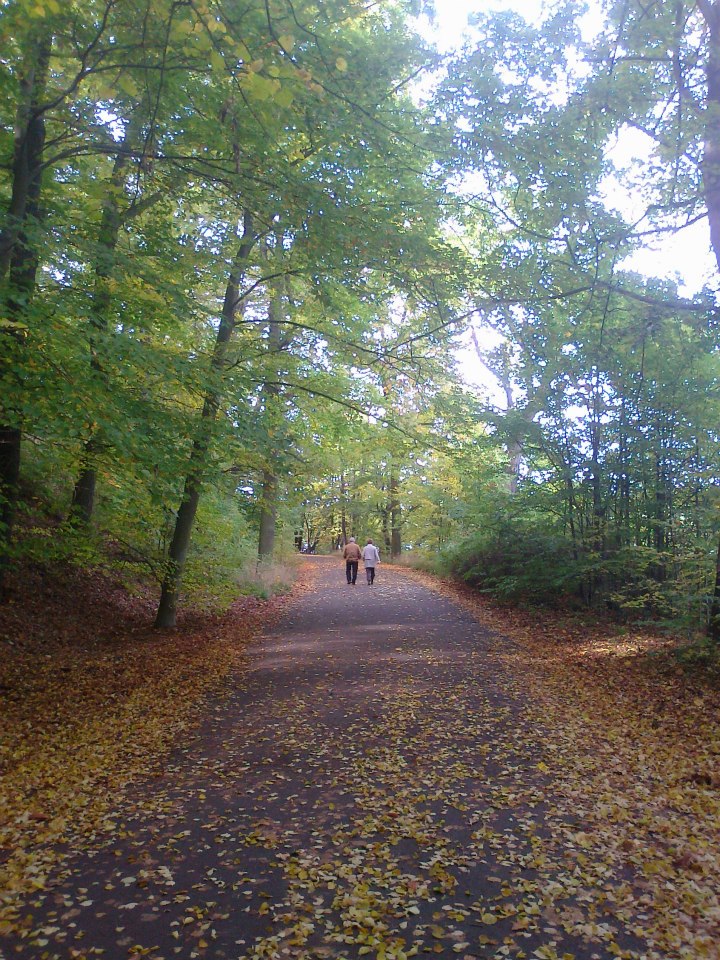
Pedestrians share the trail with cyclists
'Huge unfulfilled potential'
Asaf Leshem has faced just about every challenge while cycling along the Mauerweg, from mechanicals to negotiating sections covered by eight inches of water after heavy rainfall. But that’s all par for the course, he says. “Riding 100-miles is always a bit of an adventure,” he says.
Leshem is skeptical of my admittedly far-fetched, utopic dreams of similar trails along borders in the Middle East or through the DMZ on the Korean Peninsula. Those regions, he believes, are too dangerous to cycle around like the Iron Curtain trail - another Michael Cramer project that traces the former border of the Eastern European communist bloc known as EuroVelo 13.
Then again, he admits that no one could’ve imagined cycling the Berlin Wall for fun back in 1988. And after offering his Iron Curtain Trail example, he says, “But who knows… people cycle today between the ex-Yugoslavian countries.”
For Leshem, the real lesson of the Mauerweg is that there’s a billion euro industry in the middle of the city that could (and should) be extended to other corners of Berlin.
“Half [of the industry] revolves around the topic of the Wall and the Cold War,” he says. “However, when it comes to the rest of the Mauerweg (the western and southern parts), most of what I see every time I ride is a huge unfulfilled potential for cycling, education, and nature tourism.”
A wonderful anomaly
The fact that the Mauerweg exists seems like an anomaly, unthinkable within my lifetime. I can only imagine what my parents would’ve thought in 1989 if they knew that not only would their son one day live in Berlin, but that he’d regularly enjoy running around along the scars of the wall. They probably would’ve thought I was bonkers. But it’s here. It exists. Not only does it exist, but it officially opened just 12 years after that fateful night on November 9th, 1989.

Information signs lead cyclists into the trail
If rails can become trails, why not borders? Berlin shows it’s possible and makes the idea of a similar path along the U.S. and Mexican border, through the Korean DMZ, or even along the West Bank of Israel and Palestine - one day - seem a little less crazy than it might look on paper.
“Over the last 8 to 10 years, infrastructure along the way has gotten a lot better,” says Möllering, looking back at the Mauerweg’s development. “It’s a great way to experience history, politics, and nature in and around Berlin.”
Joe Baur is a travel, food, and adventure writer/filmmaker born-and-raised just outside of Cleveland. These days he’s based in Berlin, hitting the trails across Europe as often as possible in search of stories and new ways to torture himself–all of which he documents on his YouTube channel. He can otherwise be found in Outside Magazine, BBC Travel, Saveur, National Geographic, and more.
